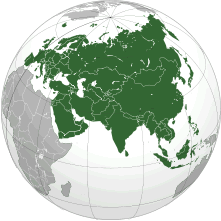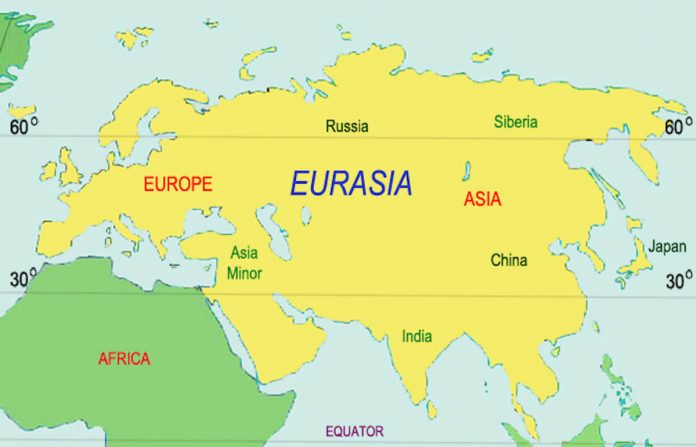The 14th Eurasia Economic Summit opened at WOW Hotel and Conference Center in İstanbul on Wednesday, April 13, 2011. During the three day conference, there were over 100, ten to fifteen-minute presentations in 7 separate sessions, which ended with a Bosphorous Cruise Luncheon.
The Conference was opened with a minute silence for Ataturk and the fallen followed by singing the Turkish national anthem. A large and beautiful photograph of Atatürk and Turkish flag adorned the speakers’ platform where dignitaries sat in separate places consisting of a Rostrum, the Spekares Platform and Reporters. A coffee cup gift set was presented to every speaker.
The President of Marmara Foundation, Dr Akkan Suver opened the conference and after reminding that many congratulatory statements were received from the Government officials, invited Prof. Ali Hasanov to speak on behalf of the President of the Republic of Azerbaijan, Mr. Ilham Aliyev. Among those followed included Dr. Murat Yalcıntas, Chairman of İCOC, Basaran Ulusoy, Chairman of TURSAB, Amb. Leonidas Chrysanthopolous, Secretary-General of BSCE. Mihail Formuzal, the President of Gagauzia, and the Presidents of Macedonia and Albania also spoke.
The second day was devoted to presentations on Fight Against Terrorism and Security and to Energy. Alexander Superfin, the General Manager of Akkuyu Russian Nuclear Power Plant Project Company, spoke about Turkey’s first nuclear power plant. It looks like they are proceeding wişth the project. The closing speech was made by the Turkish Minister of Energy Taner Yıldız.
The third day included a session on ‘’EConomy and Industry’’ and the developments in the Turkish Economy where Prof. Dr Ahmet Kırman spoke about the accomplishments and plans of ‘’Sise-Cam Group,’’ a company established by the order of Ataturk 75 years ago. This was followed by a session of the Contemporary Sagacious (Bilge) Men, which was chaired by 9th President Suleyman Demirel. Mustafa Günay, secretary-general of the Turkish Confederation of Businessmen and Industrialists (TUSKON) — one of Turkey’s leading business associations — said economic cooperation established between nations is more important than steps taken by politicians.
Representatives of religious groups in Turkey and the President of the Mongolian Buddhist Association were among the many speakers including the President of the Alliance of Civilisations Turkey Coordination Committee, Prof. Dr. Bekir Karıaga. However, the Head of Turkey’s Religious Affairs Department and the Armenian Patriarchate were not present.
The media coverage of this important conference was very limited, although there were over two dozens of TV cameras in the hall and many reporters.. Only Todays Zaman and Hurriyet Daily News carried the news with a few Turkish daily newspapers also reporting. There was a very brief article in the Hurriyet Daily News, complete with a photograph of Finance Minister Mehmet Simsek, who spoke about the accomplishments of his party. Suleyman Demirel, emphasised that the Eurasian Region deserves a better role in the global economic arena. However, no one described the EURASIA region except stating that it has a population of 400 million and a land of over several million km square. (1). Since several speakers mentioned that the population of the Turkish World is around 300 million, the majority must be from the 7 Turkish and Turkic States – Turkey, Turkish Republic of North Cyprus, Azerbaijan, Kazakistan, Uzbekistan, Turkmenistan, Kırgizistan. The President of Gagauziya Republic also participated and spoke in Turkish as well after his remarks in Russian, stating that he could not speak in his native Gagavuzya language since there were no translators (2). In fact, the speech of the former President of Kosova could not be completed due to the lack of a translator. However, later, he did deliver his speech in total.
I suggested to the President of Marmara Foundation that a map showing the EURASIA Region would be helpful since many people did not know where the Gagauziya Republic was located. Dr Akkan Suver stated that it was a good idea but for next year, although there were two more days for the conference.

(1) Eurasia is a continent or supercontinent covering about 52,990,000 km2 (20,846,000 mi2) or about 10.6% of the Earth‘s surface (36.2% of the land area) located primarily in the eastern and northern hemispheres. Geographically it is a single continent,[1] comprising the traditional continents of Europe and Asia (with Eurasia being a portmanteau of the two); the concepts of Europe and Asia as distinct continents date back to antiquity and their borders are geologically arbitrary. Eurasia, in turn, is part of the yet larger landmass of Afro-Eurasia, whereby Eurasia is joined to Africa at the Isthmus of Suez.
Eurasia is inhabited by almost 4 billion people, more than 72.5% of the world’s population (60% in Asia and 12.5% in Europe).
Eurasia was the host of many modern civilizations, based in Mesopotamia and the Indus Valley.
Jared Diamond, in his book Guns, Germs and Steel, credits Eurasia’s dominance in world history to the east-west extent of Eurasia and its climate zones, and the availability of Eurasian animals and plants suitable for domestication. He associated North Africa in his definition of Eurasia, due to it having a similar climate and peoples.
The Silk Road symbolizes trade and cultural exchange linking Eurasian cultures through history and has been an increasingly popular topic. Over recent decades the idea of a greater Eurasian history has developed with the aim of investigating the genetic, cultural and linguistic relationships between European and Asian cultures of antiquity. These had long been considered distinct.
(2) The Gagauz people are a Turkic ethnic group living mostly in southern Moldova (Gagauzia, Gagauz Yeri), southwestern Ukraine (Budjak), south-eastern Romania (Dobrogea) and northeastern Bulgaria. Unlike most other Turkic peoples, the Gagauz are predominantly… Orthodox Christians. There is a related ethnic group also called Gagavuz (or Gajal) living in the European part of northwestern Turkey. The Gagauz language belongs to the Oghuz branch of the Turkic languages, which also includes the Azeri, Turkish, and Turkmen languages. The Gagauz language is particularly close to the Balkan Turkish dialects spoken in Greece, northeastern Bulgaria, and in the Kumanovo and Bitola areas of Macedonia. The Balkan Turkic languages, including Gagauz, are a typologically interesting case, because they are closely related to Turkish and at the same time contain a North-Turkic (Tatar or Kypchak) element besides the main South-Turkic (Oghuz) element.
The Eurasian Economic Community (EAEC or EurAsEC) originated from the Commonwealth of Independent States (CIS) customs union between Belarus, Russia and Kazakhstan on 29 March 1996.[1] The Treaty on the establishment of the Eurasian Economic Community was signed on 10 October 2000,[2] in Kazakhstan’s capital Astana by Presidents Alexander Lukashenko of Belarus, Nursultan Nazarbayev of Kazakhstan, Askar Akayev of Kyrgyzstan, Vladimir Putin of Russia, and Emomali Rakhmonov of Tajikistan. On 7 October 2005 it was decided between the member states that Uzbekistan would join. Freedom of movement is implemented among the members (no visa requirements).[3] Common Economic Space was launched on 1 January 2010.[4]
|
Country |
Population |
GDP 2006 (USD) |
GDP 2007 (USD) |
growth |
per capita |
|
Belarus |
9,688,796 |
36,961,815,474 |
44,773,406,221 |
21.13% |
4,621 |
|
Russia |
142,498,534 |
984,926,789,696 |
1,289,582,151,445 |
30.93% |
9,050 |
|
Kazakhstan |
15,421,864 |
81,003,864,916 |
104,143,432,632 |
28.57% |
6,753 |
|
Kyrgyzstan |
5,316,544 |
2,834,168,893 |
3,745,000,489 |
32.14% |
704 |
|
Uzbekistan |
27,372,256 |
17,077,480,575 |
19,274,619,012 |
12.87% |
704 |
|
Tajikistan |
6,735,996 |
2,830,213,563 |
3,737,572,699 |
32.06% |
555 |
|
EAEC total |
207,033,990 |
1,125,634,333,117 |
1,465,256,182,498 |
30.17% |
7,077 |
Eurasia is inhabited by almost 4 billion people, more than 72.5% of the world’s population (60% in Asia and 12.5% in Europe).
Eurasia was the host of many modern civilizations, based in Mesopotamia and the Indus Valley.
Jared Diamond, in his book Guns, Germs and Steel, credits Eurasia’s dominance in world history to the east-west extent of Eurasia and its climate zones, and the availability of Eurasian animals and plants suitable for domestication. He associated North Africa in his definition of Eurasia, due to it having a similar climate and peoples.
The Silk Road symbolizes trade and cultural exchange linking Eurasian cultures through history and has been an increasingly popular topic. Over recent decades the idea of a greater Eurasian history has developed with the aim of investigating the genetic, cultural and linguistic relationships between European and Asian cultures of antiquity. These had long been considered distinct.
(2) The Gagauz people are a Turkic ethnic group living mostly in southern Moldova (Gagauzia, Gagauz Yeri), southwestern Ukraine (Budjak), south-eastern Romania (Dobrogea) and northeastern Bulgaria. Unlike most other Turkic peoples, the Gagauz are predominantly… Orthodox Christians. There is a related ethnic group also called Gagavuz (or Gajal) living in the European part of northwestern Turkey. The Gagauz language belongs to the Oghuz branch of the Turkic languages, which also includes the Azeri, Turkish, and Turkmen languages. The Gagauz language is particularly close to the Balkan Turkish dialects spoken in Greece, northeastern Bulgaria, and in the Kumanovo and Bitola areas of Macedonia. The Balkan Turkic languages, including Gagauz, are a typologically interesting case, because they are closely related to Turkish and at the same time contain a North-Turkic (Tatar or Kypchak) element besides the main South-Turkic (Oghuz) element.
The Eurasian Economic Community (EAEC or EurAsEC) originated from the Commonwealth of Independent States (CIS) customs union between Belarus, Russia and Kazakhstan on 29 March 1996.[1] The Treaty on the establishment of the Eurasian Economic Community was signed on 10 October 2000,[2] in Kazakhstan’s capital Astana by Presidents Alexander Lukashenko of Belarus, Nursultan Nazarbayev of Kazakhstan, Askar Akayev of Kyrgyzstan, Vladimir Putin of Russia, and Emomali Rakhmonov of Tajikistan. On 7 October 2005 it was decided between the member states that Uzbekistan would join. Freedom of movement is implemented among the members (no visa requirements).[3] Common Economic Space was launched on 1 January 2010.[4]
|
Country |
Population |
GDP 2006 (USD) |
GDP 2007 (USD) |
growth |
per capita |
|
Belarus |
9,688,796 |
36,961,815,474 |
44,773,406,221 |
21.13% |
4,621 |
|
Russia |
142,498,534 |
984,926,789,696 |
1,289,582,151,445 |
30.93% |
9,050 |
|
Kazakhstan |
15,421,864 |
81,003,864,916 |
104,143,432,632 |
28.57% |
6,753 |
|
Kyrgyzstan |
5,316,544 |
2,834,168,893 |
3,745,000,489 |
32.14% |
704 |
|
Uzbekistan |
27,372,256 |
17,077,480,575 |
19,274,619,012 |
12.87% |
704 |
|
Tajikistan |
6,735,996 |
2,830,213,563 |
3,737,572,699 |
32.06% |
555 |
|
EAEC total |
207,033,990 |
1,125,634,333,117 |
1,465,256,182,498 |
30.17% |
7,077 |
Mustafa Günay, secretary-general of the Turkish Confederation of Businessmen and Industrialists (TUSKON) — one of Turkey’s leading business associations — said economic cooperation established between nations is more important than steps taken by politicians.
Yuksel Oktay, PE
April 17, 2011
Istanbul


